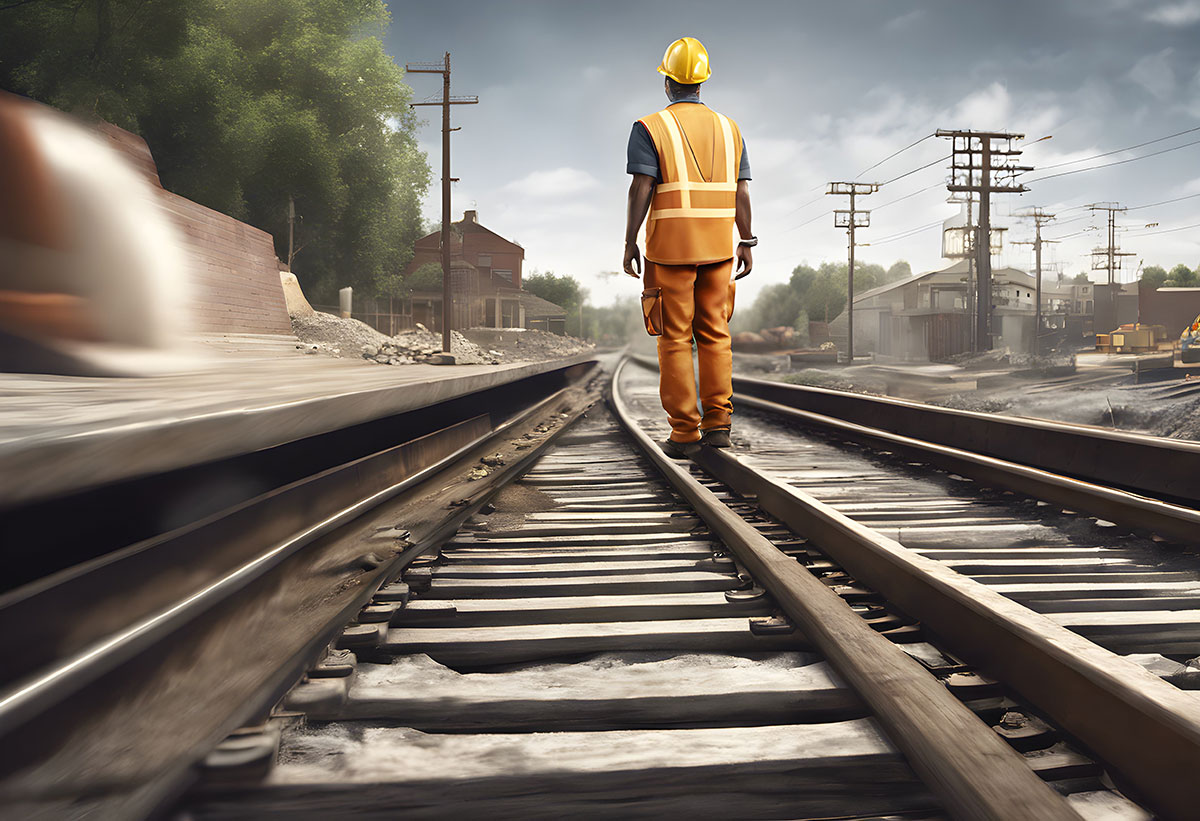Navigating Construction Work Near Railroad Tracks

Working on a construction project near a railroad track is more than just another day on the job. It requires careful planning, precise execution, and, most importantly, following the rules to avoid hefty fines and potential delays. Here’s what you need to know when your project involves a railroad right-of-way.
Know the Railroad’s Right-of-Way
Before you even start bidding on a project near a railroad, you need to know the specifics of the railroad’s right-of-way. Typically, this involves a certain distance from the center of the tracks, often extending 50 feet on either side. This is crucial because if your work encroaches on this area, you’ll need permits from the railroad company. So, the first step is understanding exactly where this boundary lies.
Getting the Necessary Permits
Once you know where the right-of-way is, the next step is securing the necessary permits. This can be a bit of a wild goose chase, involving several phone calls to different people within the railroad company. However, a smart move is to check with the engineer of record for your project. Often, they’ve already done the legwork and can guide you on who to contact for the permits. If you’re a subcontractor, go through your general contractor (GC) or the project owner—they’ll handle the contact with the railroad, saving you time and headaches.
Factor in the Cost
One crucial aspect you can’t overlook is the cost associated with these permits. You need to factor this into your bid from the get-go. If you don’t, you could end up paying out of pocket, which can seriously eat into your profits. For instance, if your project involves boring under the railroad tracks to lay a utility line, know that the railroad may require you to back up your bore, significantly increasing the length of the bore and, consequently, the cost.
Understanding the Boring Process
When you’re boring under railroad tracks, the process is more complex than just drilling a hole. Depending on the utility you’re installing—whether it’s water, sewer, gas, or fiber—you might need to use a casing pipe that’s double the size of the utility pipe to ensure safety and stability. This can involve using a directional drill to create the hole or a jacking bore where you push the pipe along as you go. It’s a meticulous process, especially when dealing with sewer lines that require a specific grade to maintain proper flow.
Dealing with Flaggers and Delays
One of the biggest challenges when working near a railroad is dealing with flaggers—railroad employees who monitor the tracks and ensure safety. You’re required to have a flagger on site anytime your work is within the right-of-way. These flaggers can halt your work whenever a train is approaching, and you might be surprised at how much time this can eat up. It’s not just a quick pause either; you might be shut down for 45 minutes or more per train. This is something you need to account for in your schedule and your bid because that downtime can add up fast.
The Cost of Non-Compliance
Now, let’s talk about what happens if you skip the permits and try to fly under the radar. If the railroad finds out you’ve encroached on their right-of-way without the proper permits, you’re looking at fines that can reach tens of thousands of dollars. These aren’t your average slap-on-the-wrist fines; they can be severe enough to cripple a small subcontractor. So, it’s not just about following the rules to avoid fines; it’s about protecting your business from a financial disaster.
Lessons Learned
The takeaway here is clear: Don’t mess with the railroad. Make sure you’ve got all your permits in place, understand the costs involved, and be prepared for potential delays. Talk to your engineer, your GC, or whoever is in charge to get all the details ironed out before you start. It’s a lot of work upfront, but it can save you from a world of hurt—and a lot of lost cash—down the line.
If you found this useful, be sure to follow us for more tips and insights into the construction world. Remember, when it comes to railroads, preparation is everything.
More recommended articles from ProfitDig
The Importance of Safety in Construction: A Guide for New Contractors
Maximizing Job Site Efficiency on a Construction Site
The Importance of Daily Jobsite Documentation (the CYA Factor)
Stop losing profit.
Build bids in minutes and track every dime with ProfitDig.
Start Risk-Free30-Day Money Back Guarantee